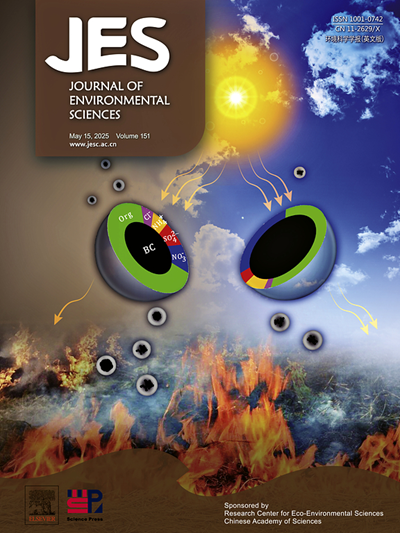环孢素A发酵渣堆肥作为有机肥的效果评价:以土壤肥力和抗生素耐药性为重点
IF 5.9
2区 环境科学与生态学
Q1 ENVIRONMENTAL SCIENCES
引用次数: 0
摘要
环孢素A发酵渣(Cyclosporin A发酵渣)是环孢素A生产过程中产生的一类有机废弃物,含有丰富的有机质、磷、氮、钾等营养物质。CFR处理不当不仅浪费宝贵的生物资源,还可能导致环孢素A及其相关耐药基因进入自然环境,对生态系统和人类健康构成重大威胁。土地利用是好氧堆肥(CAC)后CFR资源回收的有效途径。本研究探讨了CAC对土壤肥力和环境安全的影响。结果表明,CAC能改善土壤养分含量,提高土壤酶活性。CAC改变了土壤细菌的多样性和群落组成,导致有利于有机物分解和环孢素A降解的相关细菌丰度增加。引入的环孢素A(71.69µg/kg)在20天内因土壤生物降解而完全降解。土壤栽培早期显著增加的intIl、mdr3、pgp、TSR和pmra丰度在90 d内恢复到土壤背景水平,表明耐药风险降低。结果表明,合理土地施用CAC可提高土壤肥力,且无耐药性风险,有助于评价好氧堆肥后抗生素发酵渣的资源利用价值和环境风险。本文章由计算机程序翻译,如有差异,请以英文原文为准。
Assessing the effect of composted cyclosporin A fermentation residue as organic fertilizer: Focus on soil fertility and antibiotic resistance
Cyclosporin A fermentation residue (CFR) is a type of organic waste generated during the production of cyclosporin A, which are abundant in nutrients including organic matter, phosphorus, nitrogen and potassium. Inappropriate handling of CFR not only waste valuable bioresources, but may also lead to the cyclosporin A and associated resistance genes into the natural environment, posing a significant threat to ecological system and human health. Land application was an effective way to resource recovery of CFR after aerobic composting (CAC). This study investigated the impact of CAC on soil fertility and environmental safety. The results indicated that CAC could improve soil nutrient contents and enhance enzyme activities. CAC altered the diversity and community composition of soil bacteria, resulting in an increase in the abundance of relevant bacteria beneficial for organic matter decomposition and cyclosporin A degradation. The introduced cyclosporin A (71.69 µg/kg) completely degraded within 20 days due to soil biodegradation. The significantly increased abundance of intIl, mdr3, pgp, TSR and pmra in the soil cultivation early stage were restored to the soil background level within 90 days, indicating a reduced risk of antimicrobial resistance. The results demonstrated that reasonable land application of CAC could improve soil fertility without antimicrobial resistance risk, which is helpful for evaluating the resource utilization value and environmental risks of antibiotic fermentation residue after aerobic composting.
求助全文
通过发布文献求助,成功后即可免费获取论文全文。
去求助
来源期刊

Journal of Environmental Sciences-china
环境科学-环境科学
CiteScore
13.70
自引率
0.00%
发文量
6354
审稿时长
2.6 months
期刊介绍:
The Journal of Environmental Sciences is an international journal started in 1989. The journal is devoted to publish original, peer-reviewed research papers on main aspects of environmental sciences, such as environmental chemistry, environmental biology, ecology, geosciences and environmental physics. Appropriate subjects include basic and applied research on atmospheric, terrestrial and aquatic environments, pollution control and abatement technology, conservation of natural resources, environmental health and toxicology. Announcements of international environmental science meetings and other recent information are also included.
 求助内容:
求助内容: 应助结果提醒方式:
应助结果提醒方式:


